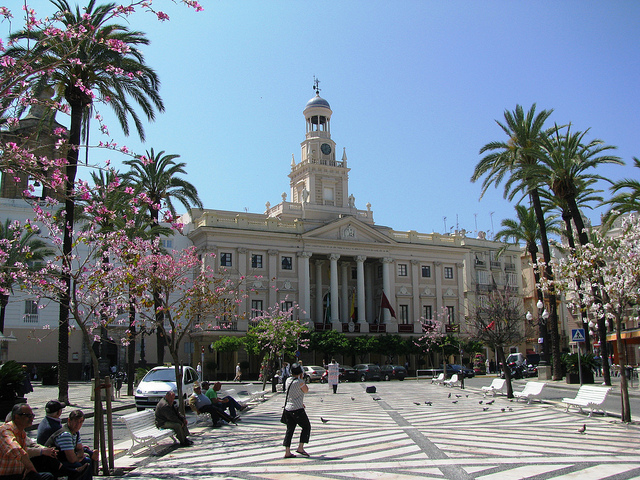Andalusia – the name alone evokes images of warm days along the Mediterranean coastline, of passionate Flamenco dancers and of equally passionate bullfights. For many people, Andalusia represents Spanish culture in itself. I had visited this iconic region of Spain several times, in 2002 and 2004, but it was now time to return and see some of the places I had missed the last couple of times.

On April 11, 2011 I landed in an Air Canada flight in Malaga and ended up taking three buses to get to my first destination: Granada. Although I had visited Granada and the Alhambra in 2002, I wanted to see this jewel of Moorish architecture again and get to know the city a bit better.

In my initial explorations of the city I checked out the area around the Cathedral and the lively Plaza Bib-Rambla before taking a local bus up to the Albaycin Hill to the famous Mirador de San Nicholas from where I had an absolutely awesome view of the Alhambra. This ancient Moorish castle was glowing in the golden hues of the setting sun. After exploring the narrow cobblestoned streets of the Moorish area of the Albaycin, incidentally a UNESCO World Heritage Site – just like the Alhambra, I descended back to the city to visit the busy Plaza Nueva and returned back to my hotel via the Gran Via.

My second day in Granada, April 12, 2011, was awesome. It started with a morning walk a through the old city centre and a visit to the municipal market. Then I met local expert Marcell Doerrier who is a Granada native and a tourism expert. Marcell organizes tours and rents out vacation homes in a small country town outside Granada.

Our city tour started with breakfast on the Plaza Nueva, and continued with a bus ride to the Gypsy Quarter of Sacromonte and a long hike through the narrow streets of the Albaycin, the city’s Moorish quarter. Then we continued our expedition downtown to cover the Cathedral, the Alcaiceria (Jewish Quarter), the lively Plaza Bib Rambla and various shopping areas of Granada. Along the way I learned a lot about Andalucia and life in this amazing city. And we got to sample some of the tasty tapas that Granada is so famous for.

In the evening I decided to check out one of the highlights of Granada – live Flamenco music! The live Flamenco shows are held in the Sacromonte area which is the gypsy district of town. The area is said to be a bit dangerous so I booked a guided tour which picked me up directly from my hotel at 10 pm. The tour guide first took us up to the Albaycin Hill, the Moorish quarter with its atmospheric narrow walkways and white-washed houses. From the Mirador de San Nicholas we had an absolutely fabulous view of the Alhambra at night – the Moorish castle never stops to enchant.

Then our minivan ride continued on to the Sacromonte area which has long been home of the “gitanos”, gypsies who have been living for centuries in homes built into mountainside caves. Flamenco is their unique art form and we got to see two separate groups of Flamenco dancers (in each case 3 women, 1 male dancer, 1 cantaor(a) – a Flamenco singer, and a guitar player). The passion in their soulful singing and dancing is unmistakable and an experience not to be missed when travelling to Andalucia.

My last day in Granada had arrived on April 13, 2011. I embarked on a visit to the Alhambra, the enchanting Moorish castle and Spain’s most visited tourist destination. I visited the Generalife, the 14th century summer palace of the Nasrid rulers which is surrounded by magnificent gardens. I then continued my stroll to the Palace of Charles V and the Alcazaba. The Alhambra has gorgeous gardens and offers a phenomenal view over the surrounding countryside. The backdrop of the Sierra Nevada Mountains is absolutely breathtaking.

Two days in Granada had certainly not been enough, but I had to move on. I picked up my rental car and drove across Andalucia to the Atlantic coastline – the Costa de La Luz where I was going to spend an entire week.



